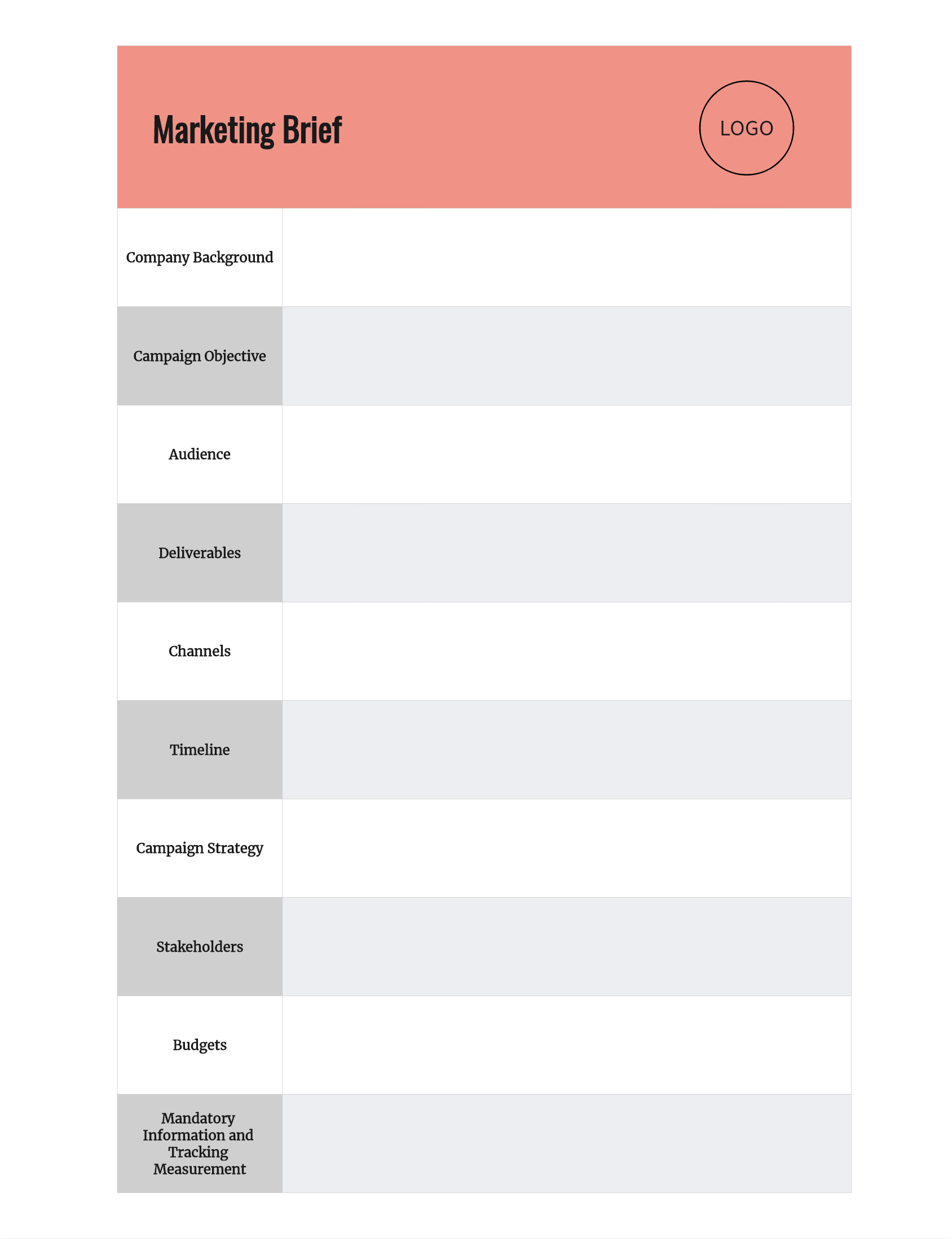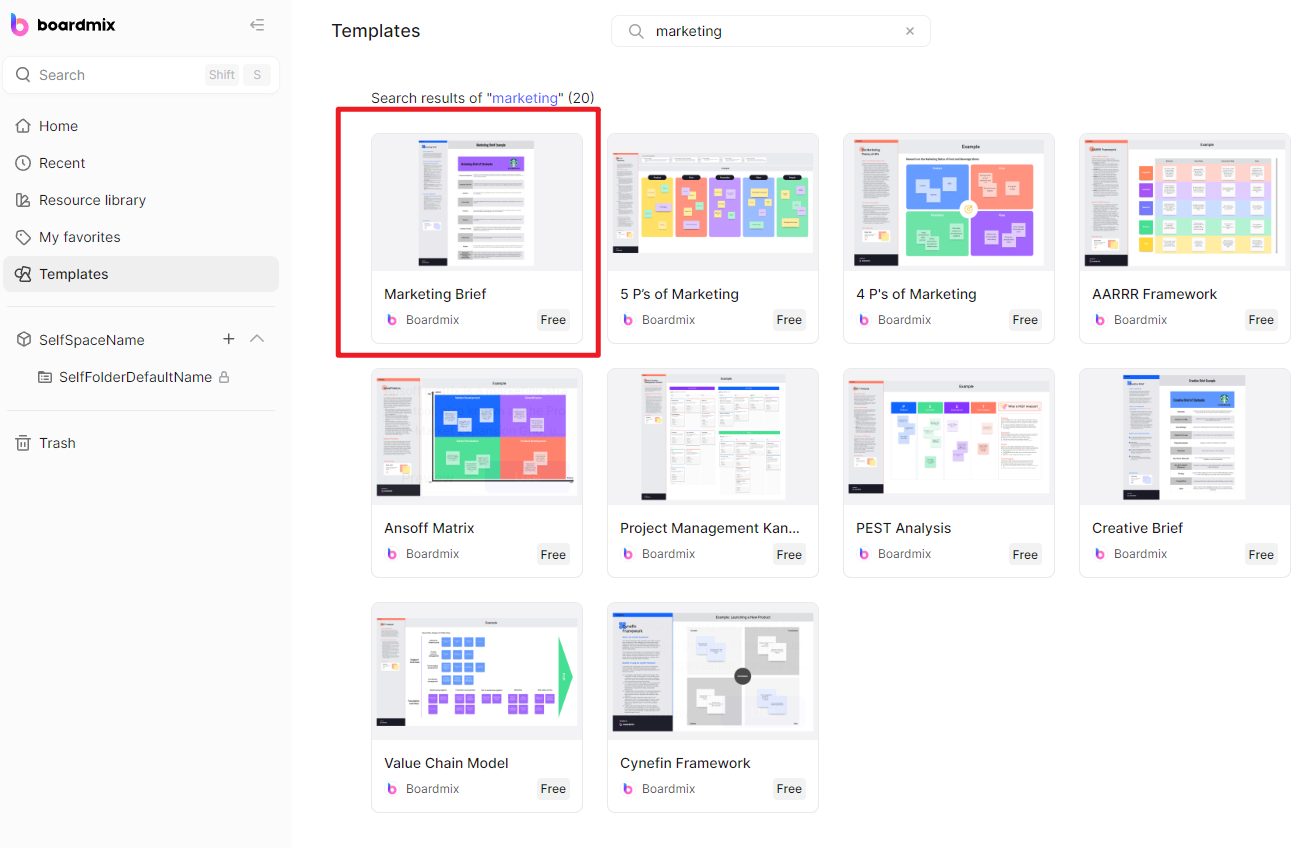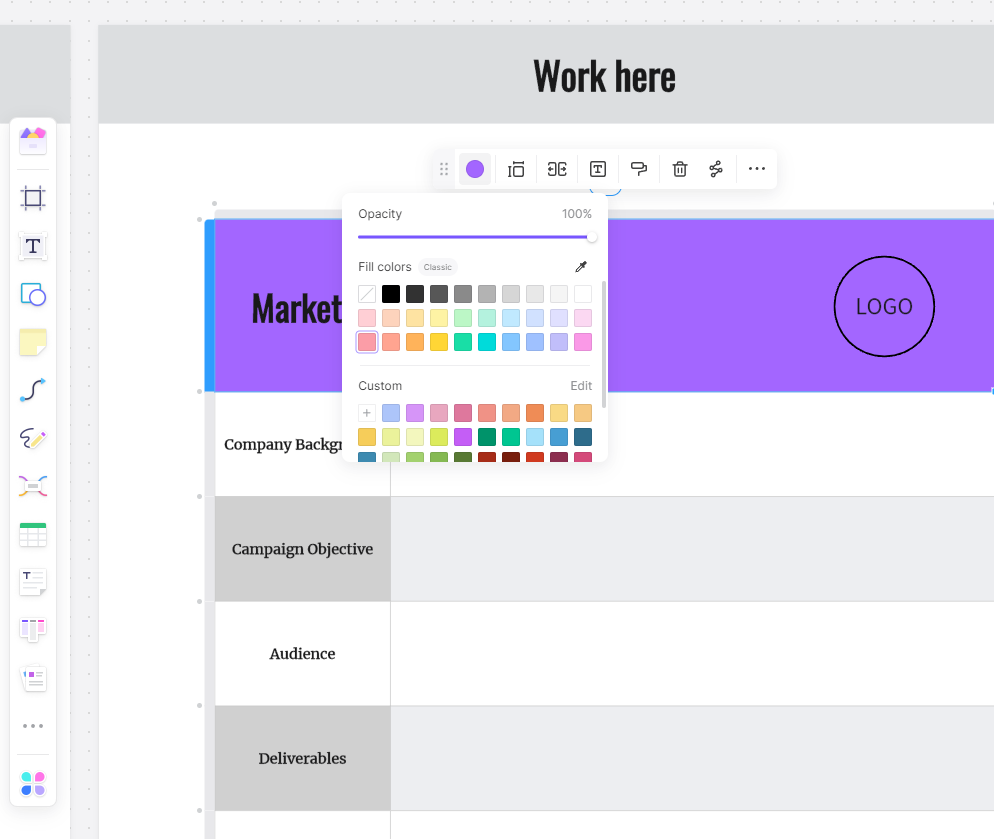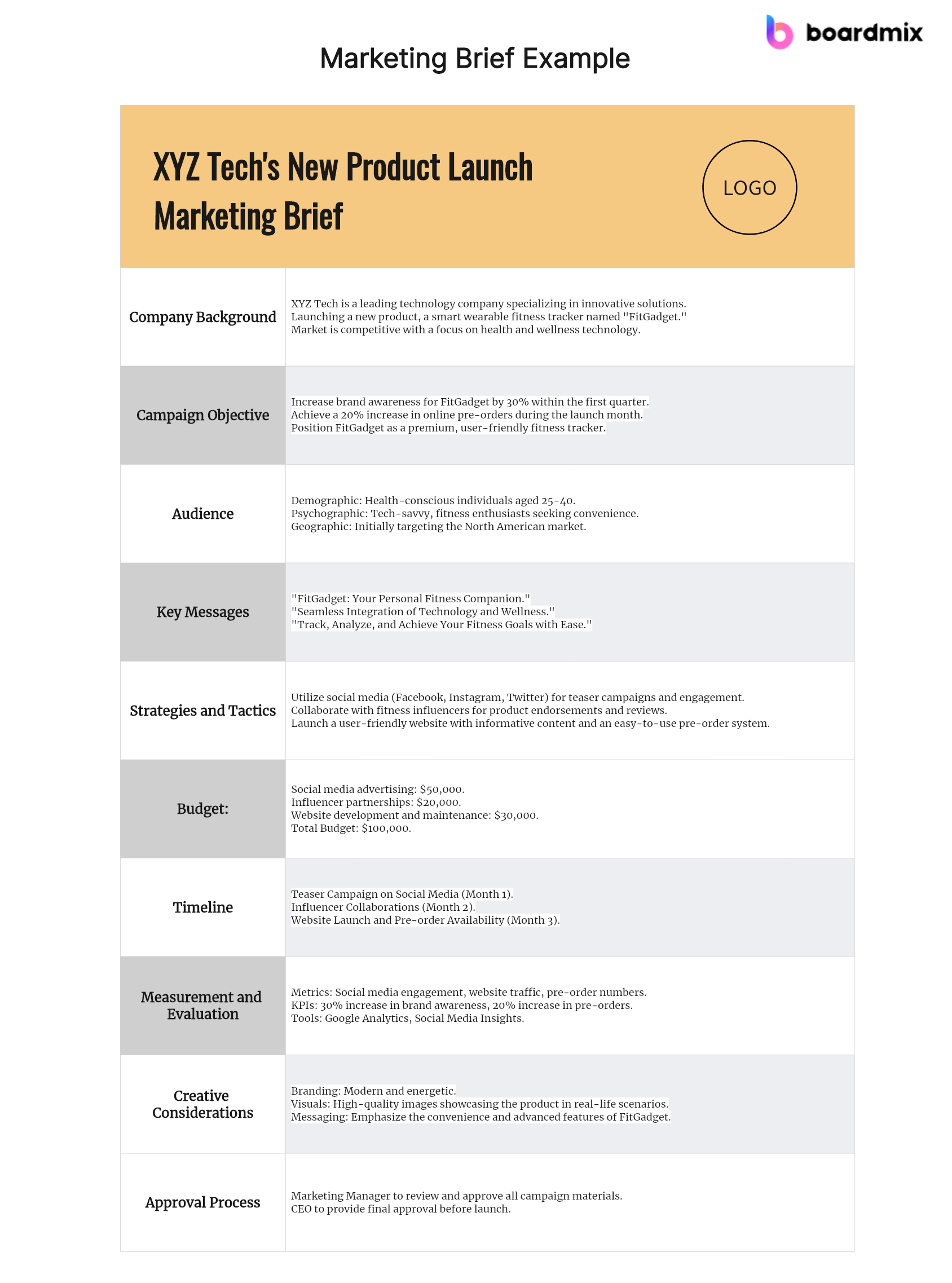A well-crafted marketing brief is an essential tool that serves as the foundation for successful marketing campaigns. Whether you're an in-house marketing team, a freelancer, or an agency, a clear and concise brief is crucial for aligning everyone involved and ensuring that the marketing strategy meets its objectives. In this article, we'll explore the key elements and steps to create an effective marketing brief.
Part 1. What is a Marketing Brief?
A marketing brief is a document that provides a comprehensive overview of a marketing project or campaign. It serves as a guide for everyone involved in the marketing process, including the marketing team, creative team, and other stakeholders. The purpose of a marketing brief is to ensure that everyone is aligned on the goals, objectives, target audience, key messages, and other important aspects of the marketing initiative.
Part 2. What Should Be Included in a Marketing Brief?
A well-constructed marketing brief should cover various aspects of a marketing project to provide a comprehensive understanding for all involved stakeholders. Here's a more detailed breakdown of what should be included in a marketing brief:

Background and Context:
- Overview of the company or product.
- Market and industry context.
- Any relevant historical information or previous campaigns.
Objectives:
- Clear and measurable goals for the marketing initiative.
- What the company aims to achieve through the campaign.
Target Audience:
- Detailed description of the target audience.
- Demographic, psychographic, and behavioral characteristics of the audience.
Key Messages:
- Core messages that the marketing campaign should convey.
- Information about the unique selling propositions (USPs) or value propositions.
Strategies and Tactics:
- Overview of the overall marketing strategy.
- Specific tactics and channels to be used (e.g., social media, email, content marketing).
Budget:
- Allocation of resources for the campaign.
- Breakdown of costs for different elements of the marketing plan.
Timeline:
- Schedule for the various stages of the marketing initiative.
- Key milestones and deadlines.
Measurement and Evaluation:
- Metrics and KPIs (Key Performance Indicators) to measure the success of the campaign.
- Evaluation criteria and methods for assessing performance.
Creative Considerations:
- Design and creative elements required for the campaign.
- Branding guidelines and any specific creative direction.
Approval Process:
- Details on the review and approval process for various elements of the campaign.
- Roles and responsibilities of key stakeholders.
Part 3. How to Write a Marketing Brief?
Writing an effective marketing brief involves a systematic process to ensure clarity and alignment among all stakeholders. Here are eight steps to guide you through creating a comprehensive marketing brief:
Understand the Purpose:
Clearly define the purpose of the marketing brief. Identify the specific goals, objectives, and desired outcomes of the marketing initiative. This understanding will shape the content and focus of the brief.
Gather Background Information:
Collect relevant background information about the company, product, or service. Understand the market context, industry trends, and any historical data that can provide insights into the marketing campaign.
Define Objectives:
Clearly articulate the goals and objectives of the marketing campaign. Make sure they are specific, measurable, achievable, relevant, and time-bound (SMART). This section should answer the question: What does the company aim to achieve through this marketing initiative?
Identify Target Audience:
Describe the target audience in detail. This includes demographic information, psychographic characteristics, and any specific segments within the audience. Understanding the audience is crucial for crafting effective messages and selecting appropriate channels.
Craft Key Messages:
Develop clear and compelling key messages that align with the brand and resonate with the target audience. These messages should communicate the unique value propositions and differentiate the company or product from competitors.
Outline Strategies and Tactics:
Define the overall marketing strategy and specific tactics that will be employed. Consider the channels (e.g., social media, email, content marketing), creative elements, and any other strategies that align with the objectives.
Determine Budget and Timeline:
Allocate resources by establishing a budget that covers various aspects of the marketing campaign. Create a realistic timeline with key milestones and deadlines for each phase of the project. Ensure that the budget and timeline align with the overall objectives.
Include Measurement and Evaluation:
Specify the metrics and Key Performance Indicators (KPIs) that will be used to measure the success of the marketing campaign. Outline the criteria and methods for evaluating performance, and include details on the tools or platforms that will be used for tracking and reporting.
Remember to keep the marketing brief concise, focused, and easily understandable. It should serve as a guiding document for everyone involved in the project. Regularly revisit and update the brief as needed throughout the campaign to adapt to changing circumstances or insights gained during the execution phase.
Part 4. Marketing Brief Template in Boardmix
Boardmix's marketing brief template is a powerful tool designed to streamline the process of creating comprehensive marketing briefs. It provides a structured framework that guides you through each crucial aspect of your marketing plan, from defining your target audience and setting clear objectives to outlining your strategy and tactics. This template not only saves time but also ensures consistency and completeness in your marketing briefs. By using Boardmix's Marketing Brief Template, you can effectively communicate your marketing vision to your team, align everyone towards common goals, and track progress with ease.

How to write a marketing brief with Boardmix:
- Access the Marketing Brief Template: Log into your Boardmix account and navigate to the templates section. Select the Marketing Brief Template.

- Customize Your Template: Start filling in the template with your specific information. You can customize each section according to your needs, add or remove elements, and even change colors or fonts if desired.

- Collaborate with Your Team: Invite team members to join your board and collaborate in real-time. They can add their inputs, make edits, or leave comments.

- Save and Share: Once you've completed your marketing brief, save it for future reference or share it directly with stakeholders from within Boardmix.
- Review and Update: As your campaign progresses, revisit your marketing brief to update any changes or track progress against objectives.
Part 5. Marketing Brief Example
Here's a simplified example of a marketing brief for a fictional product launch:

Marketing Brief: XYZ Tech's New Product Launch
1. Background and Context:
XYZ Tech is a leading technology company specializing in innovative solutions.
Launching a new product, a smart wearable fitness tracker named "FitGadget."
Market is competitive with a focus on health and wellness technology.
2. Objectives:
Increase brand awareness for FitGadget by 30% within the first quarter.
Achieve a 20% increase in online pre-orders during the launch month.
Position FitGadget as a premium, user-friendly fitness tracker.
3. Target Audience:
Demographic: Health-conscious individuals aged 25-40.
Psychographic: Tech-savvy, fitness enthusiasts seeking convenience.
Geographic: Initially targeting the North American market.
4. Key Messages:
"FitGadget: Your Personal Fitness Companion."
"Seamless Integration of Technology and Wellness."
"Track, Analyze, and Achieve Your Fitness Goals with Ease."
5. Strategies and Tactics:
Utilize social media (Facebook, Instagram, Twitter) for teaser campaigns and engagement.
Collaborate with fitness influencers for product endorsements and reviews.
Launch a user-friendly website with informative content and an easy-to-use pre-order system.
6. Budget:
Social media advertising: $50,000.
Influencer partnerships: $20,000.
Website development and maintenance: $30,000.
Total Budget: $100,000.
7. Timeline:
Teaser Campaign on Social Media (Month 1).
Influencer Collaborations (Month 2).
Website Launch and Pre-order Availability (Month 3).
8. Measurement and Evaluation:
Metrics: Social media engagement, website traffic, pre-order numbers.
KPIs: 30% increase in brand awareness, 20% increase in pre-orders.
Tools: Google Analytics, Social Media Insights.
9. Creative Considerations:
Branding: Modern and energetic.
Visuals: High-quality images showcasing the product in real-life scenarios.
Messaging: Emphasize the convenience and advanced features of FitGadget.
10. Approval Process:
Marketing Manager to review and approve all campaign materials.
CEO to provide final approval before launch.
This example provides a basic structure for a marketing brief, outlining key elements such as background, objectives, target audience, key messages, strategies, budget, timeline, and measurement. Adjust the details based on the specific needs and characteristics of the product or campaign you are working on.
Conclusion
A well-structured marketing brief is a roadmap that guides your team towards a successful campaign. By carefully defining objectives, understanding your audience, and providing detailed information, you set the stage for creativity and collaboration. Remember, an effective marketing brief is not just a document; it's a tool that aligns everyone involved and ensures your campaign hits the mark.
Boardmix is your ultimate solution for writing comprehensive marketing briefs, offering a user-friendly interface and a variety of customizable templates that streamline the process. With Boardmix, you can collaborate with your team in real time, ensuring everyone stays aligned with your marketing objectives. Plus, its ability to save and share your work directly from the platform makes it an efficient tool for managing and tracking your marketing plans.








